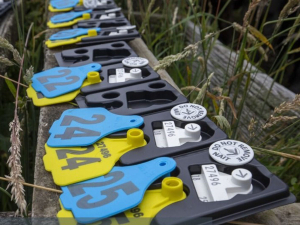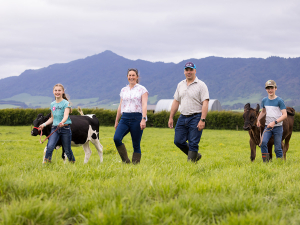Carbendazim-basedsprays, with nil milk with-holding periods, are marketed by several companies. Their performance will generally be similar provided a surfactant is included in the spray to aid spread over the sward and litter, and protect against rain. If heavy rain (more than 25 mm/24 h) occurs within three days of application, pasture should be resprayed. One supplier says its surfactant protects from rain up to three hours beyond application.
Applications should include areas along fence-lines and under trees and hedges, so aerial spraying may require some land-based follow-up to manage these potential hot-spots.
Carbendazim sprays are toxic to aquatic organisms, so care must be taken to avoid contamination of water bodies.
Best protection is achieved when stock graze pasture 7-10 days after spraying, so control by pasture spraying should be done in anticipation of the danger period, i.e. before pasture spore counts exceed 20,000/g pasture. Ongoing pasture spore counts are recommended to monitor conditions.
Depending on location and risk it may be possible to spray only part of the farm so that safe pasture is available when needed.
Farms with a high risk of FE should coordinate paddock rotation with the spray programme so that grazing blocks are treated every 14-21 days while risk remains high. A single application (with surfactant) is reported to reduce spore counts for up to six weeks, but field observations suggest protection may be only three-four weeks if weather conditions favour fungal growth.
Spore counts should, therefore, be done before grazing to determine if the pasture is still safe. Integration of the spray programme with grazing rotation can be problematic, especially if the risk is ongoing for several months, and alternative safe forages and crops should also be considered as a means to reduce spore intakes.
The effect of pasture spraying where spore counts are already high (>200,000 /g pasture) has not been well researched. In these situations pastures will remain toxic until existing spores have leached out, but further spore production will be reduced 24 hours after spraying.
This may provide a management option in emergency situations, but cows will still be exposed to sporidesmin.
Other pasture management approaches
The fungus is saprophytic, growing on dead plant material, so pasture with a lot of debris has higher counts. This has led to the commonly-held view that topping pastures will increase the risk of spore growth. Early efforts to manage FE focussed on pasture management and topping was thought to increase risk for lambs.
• Article sourced from DairyNZ Technical Series February 2012.















